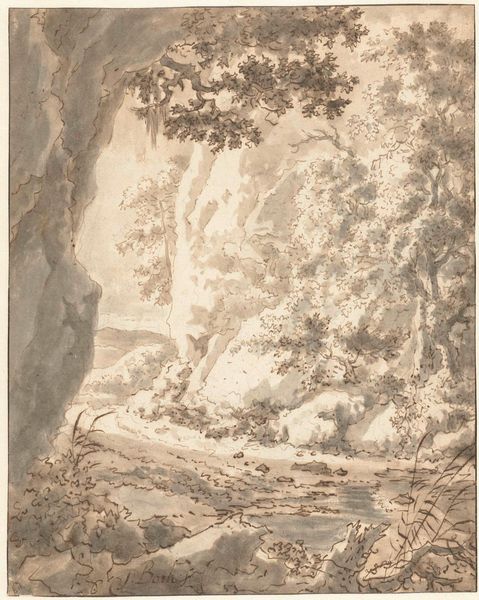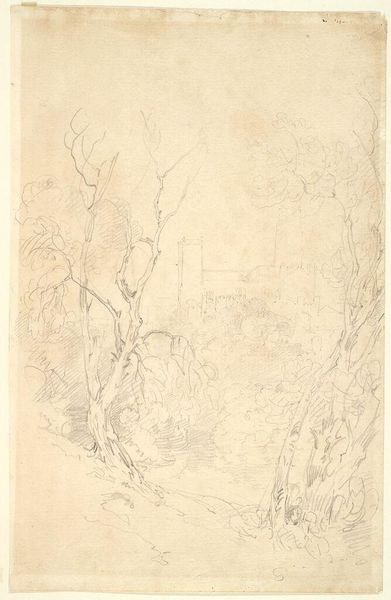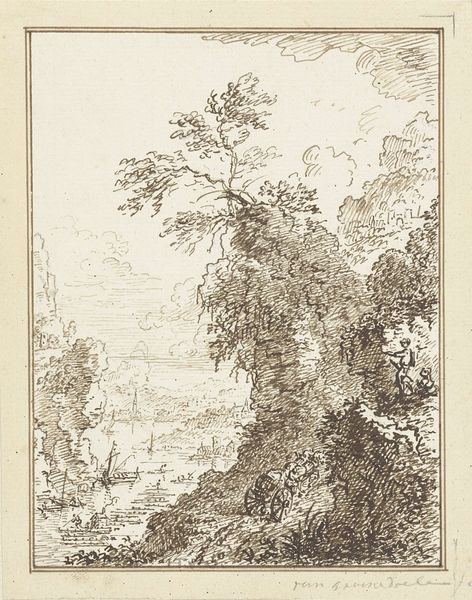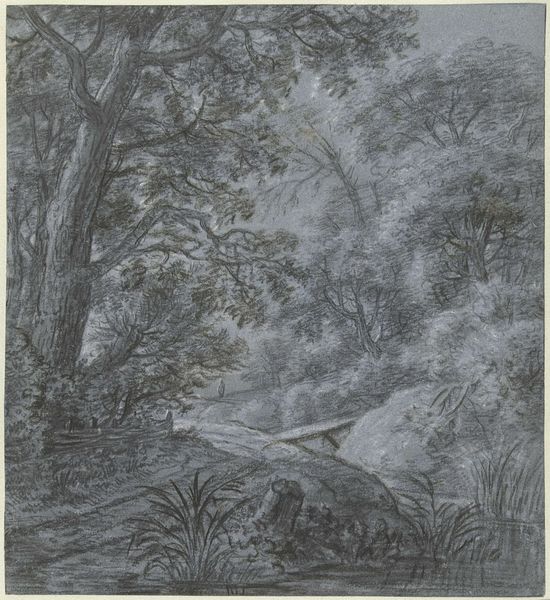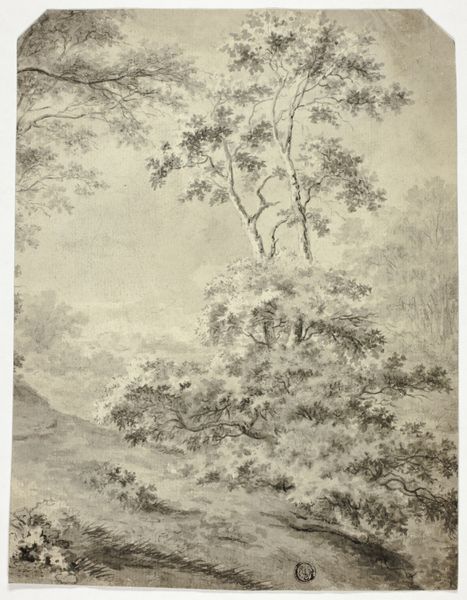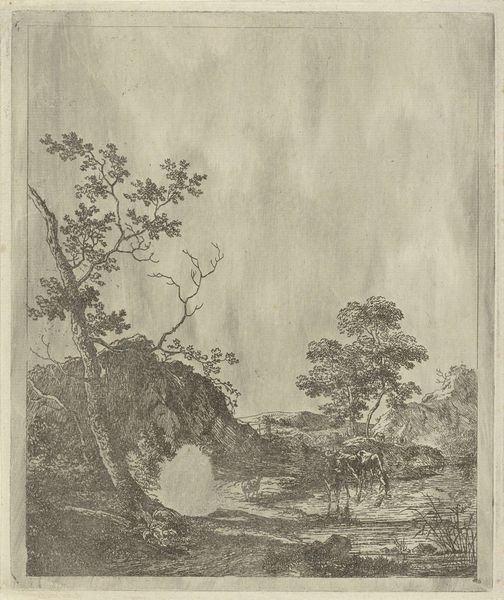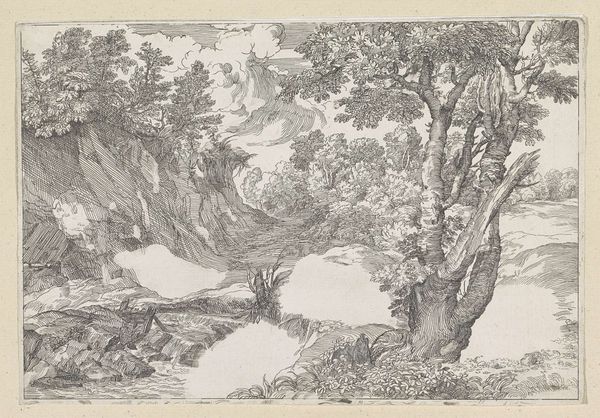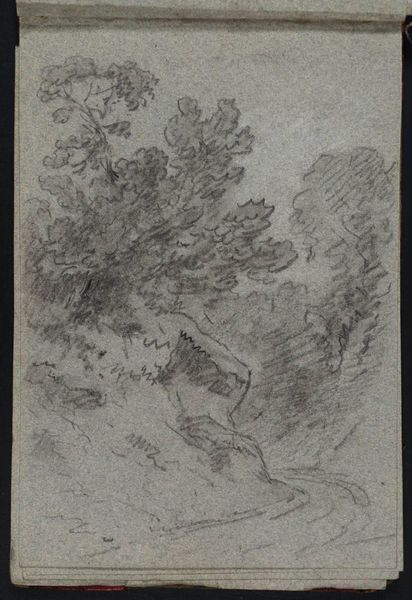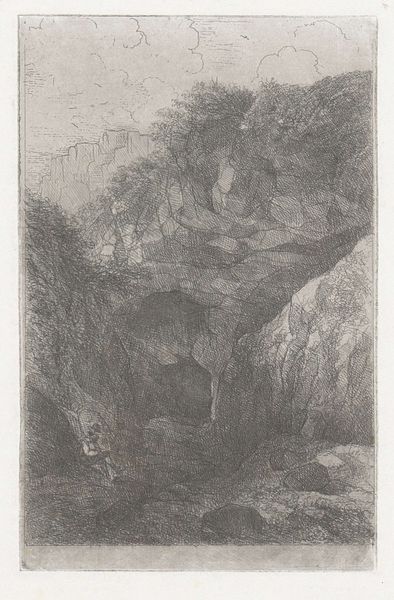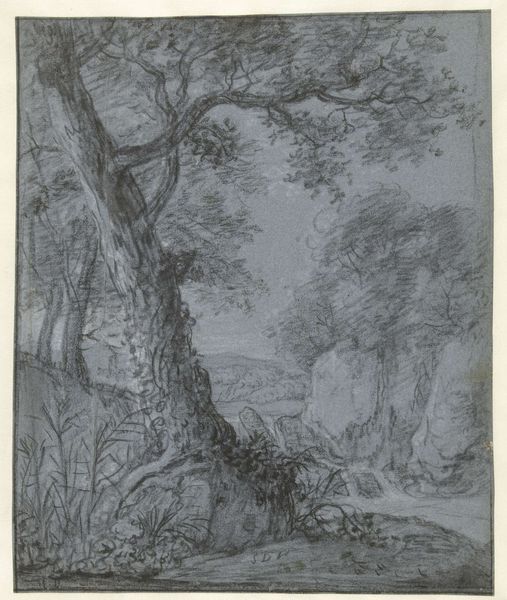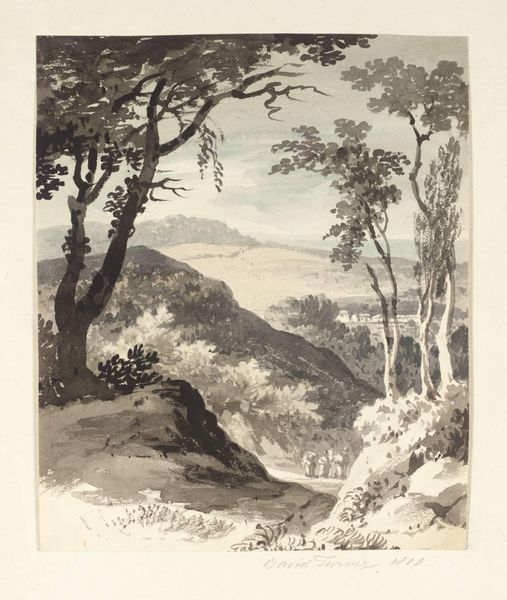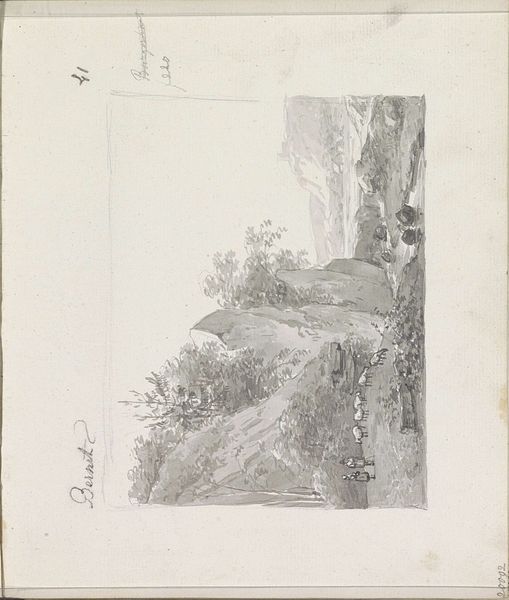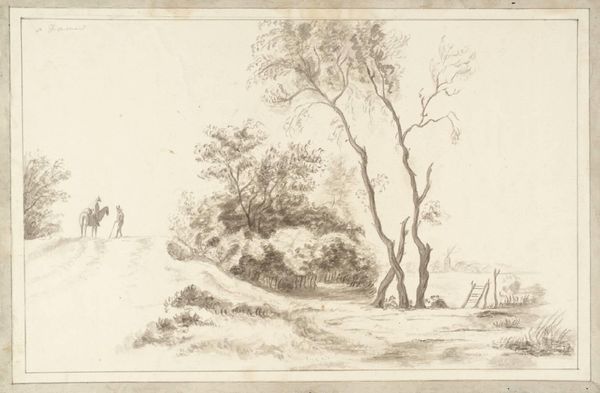
drawing, pencil
#
drawing
#
baroque
#
landscape
#
etching
#
pencil drawing
#
pencil
#
pencil work
Dimensions: height 164 mm, width 96 mm
Copyright: Rijks Museum: Open Domain
Curator: Here we have “Bergachtig landschap met bomen,” or “Mountainous Landscape with Trees,” a pencil drawing crafted sometime between 1673 and 1721 by Jan Vincentsz. van der Vinne. What’s your first impression? Editor: It’s ethereal, almost like a fading memory. The limited tonal range of the pencil gives it a hazy, dreamlike quality, obscuring any detail. I can discern the basic forms—trees, a rocky outcropping—but they seem to dissolve into the surrounding light. Curator: Indeed. Van der Vinne employs delicate lines to create subtle tonal modulations, building depth and texture with impressive efficiency. Note the artist’s strategic layering to construct a landscape where shadow and light play defining roles. The overall composition, in effect, is an almost mathematical exploration of volume. Editor: But this type of idealized landscape served a specific purpose in the Dutch Golden Age, didn’t it? Van der Vinne isn't merely rendering observable nature; he's participating in a larger cultural dialogue. I imagine the drawing was created to highlight an ideal version of the Dutch countryside, a symbol of national pride. Curator: Possibly, but the handling also seems quite direct and naturalistic, if still highly composed. One cannot ignore his manipulation of form; see the pyramidal structure of the rock formation juxtaposed against the verticality of the slender trees. Consider the distribution of the pencil work as it articulates different masses— it becomes an elegant abstract rendering. Editor: It makes me wonder, too, about the artist's patrons, and how their tastes influenced Van der Vinne's subjects and style. These idealized landscapes functioned almost as pastoral advertisements to represent a type of bucolic and controlled natural realm. Curator: The execution certainly reinforces the idealized aspects. He avoids sharp, defined boundaries in favor of blending tones to craft the forms gradually; observe this around the tops of the trees, to produce something that looks timeless. Editor: Ultimately, seeing it as an important document about the prevailing cultural attitudes helps to contextualize its enduring popularity. We learn so much about the 17th-century perception of the role and perception of nature. Curator: Indeed. There is so much more to this piece than initially meets the eye, even if it seems so quiet on first impression.
Comments
No comments
Be the first to comment and join the conversation on the ultimate creative platform.
